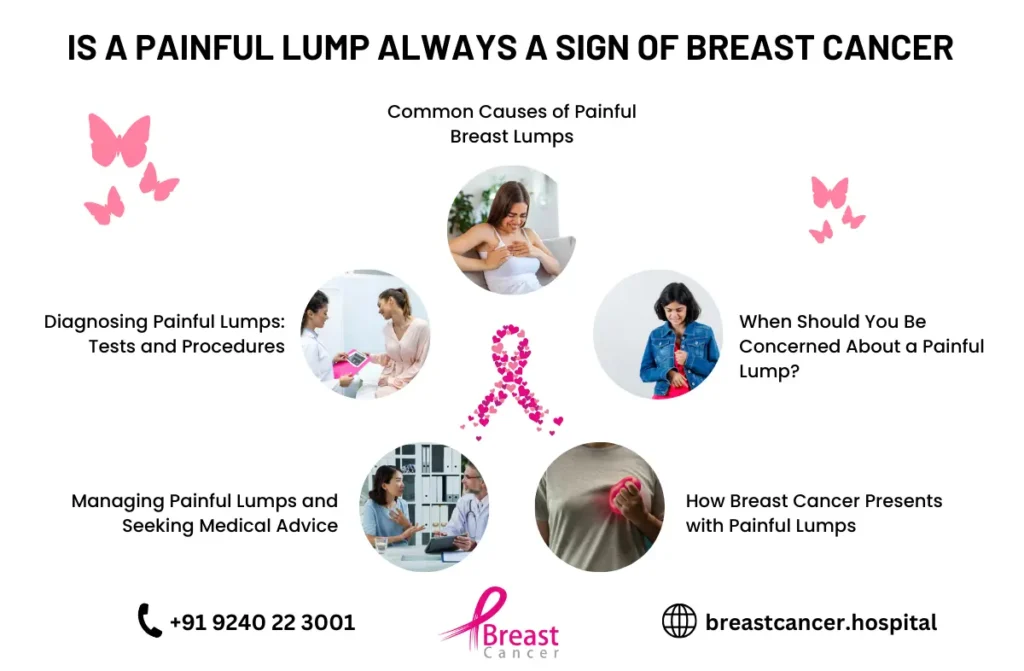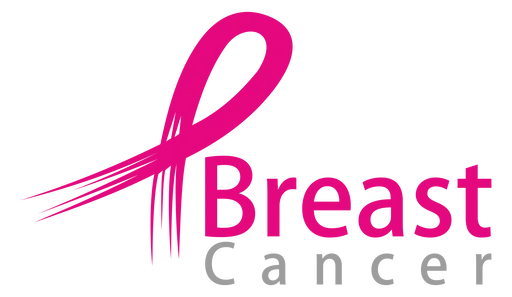Discovering a sudden painful lump in breast can be alarming, and it is natural to worry about what it could mean for your health. There are many possible causes for such lumps, and not all of them are cancerous or severe. However, it is crucial to monitor the lump, understand potential symptoms, and know when to seek medical attention. This article will explore various causes, symptoms, and treatment options related to sudden painful lumps in the breast, along with insights on managing the situation.
What is a Sudden Painful Lump in the Breast?
A sudden painful lump in the breast can arise due to several reasons. These lumps may be linked to benign conditions like cysts, infections, or fibrocystic changes, which are often harmless but can still cause discomfort. In some cases, hormonal fluctuations during the menstrual cycle can also result in temporary breast lumps. However, a painful lump could also be an early sign of something more serious, such as breast cancer.
While most breast lumps are not cancerous, it’s important to recognize when to worry. If the Sudden Painful Lump In Breast feels hard, and immovable, grows over time, or is accompanied by other symptoms like nipple discharge or skin changes, it is essential to consult a doctor for further evaluation. Regular self-examinations and timely medical advice are critical for early detection and appropriate treatment. Never hesitate to get a professional opinion if you notice any changes in your breast health.

Breast Lump: When to Worry
While many breast Sudden Painful Lump In Breast are harmless, it’s essential to know the signs that may indicate a more serious condition. A breast lump can develop due to hormonal changes, cysts, or infections. So, when should you be concerned?
You should consider when to worry if the sudden painful lump does not go away within two weeks, grows larger, becomes harder, or changes in shape. Additionally, if you notice any other symptoms such as nipple discharge, skin dimpling, or changes in the appearance of the breast, these can also be signs that require further investigation by a healthcare professional. Persistent lumps that do not fluctuate with your menstrual cycle should also raise concern.
Many breast lumps are harmless, but it’s important to recognize when a breast lump warrants medical attention. Signs that a breast lump when to worry include:
- A hard lump in the breast that doesn’t move
- A small lump in the breast that grows over time
- Pain or tenderness accompanying the lump
- Skin changes over the lump, such as redness or dimpling
If you notice any of these symptoms, consult your healthcare provider. Early detection is vital, especially when dealing with Sudden Painful Lump In Breast or other serious conditions.
Common Causes of a Sudden Painful Lump in Breast
There are several common reasons why a Breast Lump When To Worry might appear, and not all of them are linked to cancer. Here are some typical causes:
- Hormonal Changes: Hormones, particularly during your menstrual cycle, can cause your breasts to feel swollen, tender, and lumpy. These lumps are often associated with fibrocystic breast changes and typically resolve on their own once hormone levels stabilize. They are generally soft, movable, and tender to the touch.
- Breast Cysts: Breast cysts are fluid-filled sacs that form within the breast tissue. While they may appear suddenly and cause pain, they are usually benign. Breast cysts can range in size from small to large and may feel tender, especially before menstruation.
- Infections: Infections such as mastitis, which is common during breastfeeding, can cause painful lumps. These lumps are often accompanied by redness, swelling, and sometimes fever. Early treatment is critical to avoid complications from infections.
- Injury or Trauma: A blow or injury to the breast can cause a lump, often accompanied by bruising. The injured area may feel tender, and the lump will likely resolve as the tissue heals.
Hard Lump in Breast
If you feel a hard lump in breast, it can be more concerning than a soft one, especially if it doesn’t go away over time. Unlike cysts, which are typically fluid-filled and softer, a hard lump may be more fixed and less mobile. A hard, immovable lump could signal a more severe issue, including breast cancer, and warrants immediate attention. Hard Lump In Breast that do not fluctuate with hormonal cycles or those that appear suddenly should always be evaluated by a doctor.
Small Lump in Breast
A small Lump In Breast the breast can be easily overlooked during self-examinations, but it is equally important to monitor any changes. While small lumps may not cause immediate concern, they can indicate various conditions ranging from benign fibroadenomas to early-stage breast cancer. Even though Breast Lump When To Worry are often non-cancerous, it’s essential to have them checked by a healthcare provider, especially if they persist or grow over time.
Symptoms to Watch For
When dealing with a sudden painful lump in the breast, it’s essential to monitor other symptoms that might accompany it. These can include:
- Redness or warmth in the breast or around the lump.
- Changes in breast size or shape.
- Nipple discharge, particularly if it is bloody or pus-like.
- Swelling in one or both breasts.
- Dimpling of the skin over the lump, resembling the texture of an orange peel.
When to See a Doctor
While many causes of a Sudden Painful Lump In Breast are benign, it’s important to consult a healthcare professional to rule out more serious conditions, such as breast cancer. You should seek medical attention if:
- The lump persists for more than a couple of weeks
- The pain is severe or worsening
- You notice any discharge from the nipple, particularly if it’s bloody or pus-like
- There are significant changes in the breast skin or nipple
Breast Lump: When to Worry and Seek Help
Understanding when to worry about a small Lump In Breast is vital for ensuring timely medical intervention. If you notice the following, it is time to seek professional help:
- The lump persists beyond two weeks.
- There is a discharge from the nipple, particularly if it is bloody.
- The skin over the lump appears dimpled or puckered.
- The lump feels hard and immovable.
- There is a sudden change in the size or shape of the breast.
Early detection is critical in addressing any serious conditions, including breast cancer. If you’re unsure about a lump, consult your healthcare provider for peace of mind.
Diagnostic Procedures for a Sudden Painful Lump in Breast
When you visit your doctor with concerns about a sudden painful lump in breast, several diagnostic procedures may be recommended to determine the cause of the lump. Common diagnostic tools include:
- Mammogram: This X-ray of the breast can help detect any abnormalities in the tissue. It is often used to screen for breast cancer and other issues in women over 40.
- Ultrasound: A breast ultrasound uses sound waves to create images of the inside of your breast, helping to differentiate between solid masses and fluid-filled cysts.
- MRI: For more detailed imaging, your doctor may recommend an MRI, which provides a clearer view of breast tissue.
- Biopsy: In some cases, a biopsy cancer may be needed. During this procedure, a small tissue sample from the lump is taken and examined under a microscope to determine whether it is cancerous or benign.
Risk Factors
Certain factors can increase the likelihood of developing a sudden painful lump in the breast.
Common Risk Factors Include:
- Age: Women in their 30s-50s are more likely to develop non-cancerous breast lumps.
- Hormonal Fluctuations: Menstrual cycles, pregnancy, and menopause can contribute to breast lump formation.
- Family History: Having close relatives with breast cancer increases risk.
- Infections: Bacterial infections in breast ducts can lead to painful lumps.
- Previous Breast Lumps: A history of cysts or fibroadenomas raises the risk of recurrence.
Regular self-examinations and mammograms help in detecting hard lumps in the breast early.
Prevention
While some breast lumps are unavoidable, adopting certain lifestyle habits can minimize risks.
Ways to Prevent a Sudden Painful Lump in the Breast:
- Perform Regular Self-Exams: Check for any unusual changes in breast tissue.
- Maintain a Healthy Diet: Reduce processed foods and consume anti-inflammatory foods.
- Stay Hydrated: Drinking plenty of water prevents cyst formation.
- Wear a Well-Fitted Bra: Provides support and prevents unnecessary strain on breast tissue.
- Limit Caffeine and Alcohol: Excessive consumption has been linked to increased breast lump formation.
Conclusion
Finding a sudden painful lump in the breast can be a stressful experience, but it’s essential to remember that many breast lumps are benign and treatable. Whether due to hormonal changes, cysts, infections, or other causes, regular self-examinations and timely medical consultations are key to managing breast health. Understanding when to worry about a breast lump and when to seek professional help can lead to early detection and better outcomes. If you’re ever in doubt, it is always best to consult with a healthcare provider for accurate diagnosis and peace of mind.
Read also: Breast cancer treatment in India




